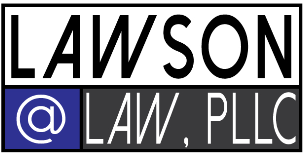The below is general information only on challenging garnishments under Kentucky law. The information is not legal advice, and should not be treated as such and is subject to the legal disclaimer.
If your Wages or Bank Account have been Garnished
If you’ve been served with a garnishment, unfortunately your options are limited. A bankruptcy can stop most garnishments. But bankruptcy is a very serious financial decision that will have long-lasting implications. You should not file bankruptcy as a knee-jerk reaction to an immediate problem. A garnishment means that a creditor has a judgment against you. (This does not apply to garnishments to collect defaulted student-loan debt.). In most cases, you need to attack the judgment in order to quash or set aside the garnishment.
A Judgment has been Entered Against You
To get a judgment, the creditor first has to serve you with a summons and complaint. The most effective way to attack a judgment is on grounds that you were not served with the summons and complaint as required by law. But this has to be true. If you don’t recall being sued, you should immediately go to the clerk of the court that issued the garnishment and check your case file.
What to Look for in Your Case File
Once you have the case file, you should carefully review the complaint to see if you recognize the debt for which you were sued. Next, you should check the proof of service. Under Kentucky law, there are two means of service: registered mail and personal service, usually by a sheriff’s deputy. If service was by registered mail, there should be a green, return receipt in the file. If service was by personal service, there should be signed summons return in the file. NOTE: the summons will be signed by the Process Server, usually a Sheriff’s Deputy. Kentucky law does not require the recipient of a summons and complaint to sign the summons.
Review the summons return. Is it addressed to you? Were you living at the address at the time of service? Review the green card. Is your signature on the card? Was it addressed to you? Did you live at that address at the time of service? If the file does not provide valid proof that you were served with the summons and complaint, you have valid grounds to quash or set aside the garnishment.
A Non-Wage Bank Garnishment can be Set Aside to Protect Exempt Funds
Certain funds are exempt from garnishment. For example, if your bank account consists of social security payment, disability payment, student loan disbursement, etc., you have grounds to set aside a non-wage bank garnishment.
A Garnishment May be Subject to Attack on Grounds that the Creditor Sued the Wrong Person
If you don’t owe the debt on which you were sued, you may have grounds for setting aside the garnishment. This is not fool proof and may depend in large part on the judge that hears the challenge.
How to File a Garnishment Challenge
The official garnishment challenge form can be found here. Fill out the form, including a brief description of your grounds for challenging the garnishment. For example, the Complaint was served on the wrong person and I never received notice of the lawsuit. The only funds in my bank account are from my social security award. Take the completed form to the clerk of the court issuing the garnishment. The clerk will notify the creditor or the creditor’s attorney of the garnishment and give you a date for a hearing. You need to appear at the hearing in order to argue your case. Be sure to bring any documents that support your argument. For example, bring a copy of your of social security award or an example of your signature to show that you didn’t sign the green return card.

